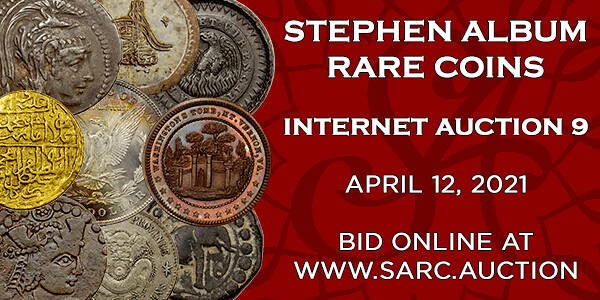
PREV ARTICLE
NEXT ARTICLE
FULL ISSUE
PREV FULL ISSUE
VOCABULARY TERM: DESIGN COMPETITIONHere's another entry from Dick Johnson's Encyclopedia of Coin and Medal Terminology. -Editor Design Competition. A contest to obtain a desired coin or medal design. There are two kinds: open and closed. Anyone from the public is allowed to enter an open competition; entries come from the most competent professional artist to the most amateurish, childish contestant. A closed competition is available only to those who are so invited by the sponsor, often for a fee and irrespective of the outcome of the contest. While most professional artists refuse to enter an open contest, considering it a waste of their time and talent, they will readily accept participating in a closed competition. Many American coins and medals have been designed by competition. The U.S. Treasury conducted such contests in the period 1892-1915 for new coin designs; by and large the search was unsuccessful. The new coin designs after this period were created by accomplished sculptor-medalists (Buffalo nickel by James Fraser, Mercury dime by Adolph Weinman, Liberty standing quarter by Hermon McNeil, Liberty walking half dollar by Weinman, Peace dollar by Anthony de Francisci). Yet another contest was held in 1937 for the new five-cent piece, resulting in the Jefferson nickel. (Even so the accepted design by Felix Schlag was dramatically modified.) Again, in 1975, the reverse of the dollar, half and quarter for the bicentennial era coinage, were obtained by open competition. Perhaps the largest such design competition was mounted in 1974 by the Franklin Mint to obtain bicentennial medal designs for each of fifty state medals. There are advantages and disadvantages to both types, or even using competitions at all. They do elicit public participation, but often the designs obtained are unsuitable both artistically and to the constraints of coin and medal production. They often find fresh new talent, but these artists woefully lack the technical skill to produce a satisfactory model. If an organization is willing to accept whatever it receives – and modify the design for necessary technical production – then an open competition may be used. Otherwise commissioning a small group of experienced professional artist-medalists is preferred. If they are invited to participate, the organization must pay each, but the quality expected may be far superior. It is the duty of the organization to inspire the artists to produce their most creative work. Competitions requiring three-dimensional models (instead of drawings) occurred in the United States for the 1932 Washington quarter and the 1939 Jefferson nickel (among others). These are somewhat questionable, since a great many contestants may waste their time creating a model without the knowledge of how to do so. Also since one is accepted, the others are returned to the artists. Often these models, the rejected designs – are put to some other use, as being reworked for a medal program, or become stock designs, or simply rest in the artist's studio until his death whereupon they come on the market and sometimes sold to collectors.
To read the complete entry on the Newman Numismatic Portal, see:

Wayne Homren, Editor The Numismatic Bibliomania Society is a non-profit organization promoting numismatic literature. See our web site at coinbooks.org. To submit items for publication in The E-Sylum, write to the Editor at this address: whomren@gmail.com To subscribe go to: https://my.binhost.com/lists/listinfo/esylum All Rights Reserved. NBS Home Page Contact the NBS webmaster 
|